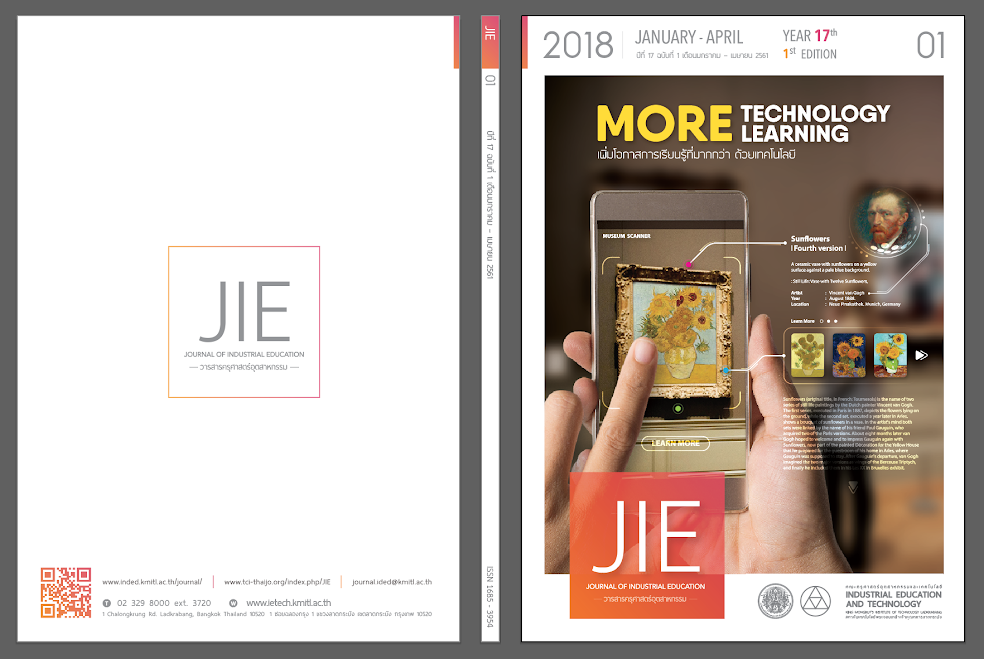CHALLENGES IN TEACHING LARGE CLASSES ON A FUNDAMENTALS OF INFORMATION TECHNOLOGY COURSE WITH A BLENDED LEARNING ENVIRONMENT
Keywords:
Large Classes, Blended Learning, Fundamentals of Information Technology, Teaching and LearningAbstract
The effective management of large classes is continually discussed amongst researchers in higher education. Teaching large classes is a challenge, especially in introductory courses for first year undergraduates who are new to the university environment. The objectives of this research were (1) to analyse students’ satisfaction with the activities used in a Fundamentals of Information Technology course with a blended learning environment; (2) to study the problems in teaching large classes in this course; and (3) to find out how to improve learning and teaching in large classes using the student opinions gathered in this research. Data were collected using two sources: (1) students’ scores from the mid-term and final examinations, and (2) an anonymous survey conducted before the final examination. 120 students were surveyed about learning and teaching matters in the introductory course. The questionnaires were quantitatively and qualitatively analysed. Percentage analysis was done to group the levels of satisfaction regarding activities in this course. Students’ reflections on large class problems, and suggestions to improve learning and teaching, were qualitatively analysed. The results indicate that most students were satisfied with activities involving technology integration, such as computer labs. The main problem with large classes in Thailand is loud noise, caused by factors of anonymity and culture. The solutions to improving learning and teaching in large classes are: increasing student-teacher interaction; adding more informal study; encouraging more class attendance; reducing anonymity; and grouping students based on their abilities.
References
[2] Haddad, C. 2006. Practical Tips for Teaching Large Classes: A Teacher’s Guide. https://www2.unescobkk.org/elib/publications/095/Teaching_Large_Classes.pdf
[3] AUTC (Australian University Teaching Committee) 2001. Teaching Large Classes. https://www.tedi.uq.edu.au/largeclasses/
[4] Jungic, V., Kent, D. and Menz, P. 2006. Teaching large math classes: three instructors, one experience. International Electronic Journal of Mathematics Education, 1(1), p. 1-15.
[5] Carpenter, J.M. 2006. Effective teaching methods for large classes. Journal of Family & Consumer Sciences Education, 24(2), p. 13-23.
[6] Center for Teaching Excellence, University of Maryland 2008. Large Classes: A Teaching Guide. https://www.cte.umd.edu/library/teachingLargeClass/guide/index.html
[7] Plump, C. and LaRosa, J. 2017. Using Kahoot! in the Classroom to Create Engagement and Active Learning: A Game-Based Technology Solution for eLearning Novices, Management Teaching Review, 2(2), p. 151-158.
[8] Colbert, J.T., Olson, J.K. and Clough, M.P. 2007. Using the web to encourage student-generated questions in large-format introductory biology classes. CBE- Life Sciences Education, 6(1), p. 42-48.
[9] Marsh II, G.E. and McFadden, A.C. 2009. Barrier to Blended Instruction: Adapting Conventional Instruction for Large Classes. https://www.westga.edu/~distance/ojdla/winter64/marsh64.htm
[10] Samson, P.J. 2010. Deliberate Engagement of Laptops in Large Lecture Classes to Improve Attentiveness and Engagement. Computers in Education, 20(2), p. 1-19.
[11] UNESCO. 2006. Positive Discipline in the Inclusive, Learning-Friendly Classroom – A Guide for Teachers and Teacher Educators. https://www2.unescobkk.org/elib/publications/086/Pos_Dis-final.pdf
[12] Torrisi-Steele, G. and Drew, S. 2013. The literature landscape of blended learning in higher education: the need for better understanding of academic blended practice. International Journal for Academic Development, 18(4), p. 371-383.
[13] Davis, B.G. 2002. Quizzes, Tests, and Exams, University of California, Berkeley. https://teaching.berkeley.edu/bgd/quizzes.html
[14] Hancock, T. 1996. Effects of class size on college student achievement. College Student Journal, 30(2), p. 479-481.
[15] Lau, W.W.F. and Yuen, A. H.K. 2009. Exploring the effects of gender and learning styles on computer programming performance: implications for programming pedagogy. British Journal of Educational Technology, 40(4), p. 696–712.
[16] Visano, B.S. 2003. Teaching Large Classes. CORE Newsletter, 13(1).
[17] Cuseo, J. 2007. The empirical case against large class size: Adverse effects on the teaching, learning, and retention of first-year students. Journal of Faculty Development, 21, p. 5–21.
[18] Mulryan-Kyne, C. 2010. Teaching large classes at college and university level: Challenges and opportunities. Teaching in Higher Education, 15(2), p. 175−185.
[19] Andersson, R. and Torgny, R. 2000. Encouraging Students in Large Classes. The thirty-first SIGCSE technical symposium on Computer science education, March 8-12, in Austin, Texas.
[20] Preston, J.A. and Shackelford, R. 1998. A System for Improving Distance and Large-Scale Classes. The 6th annual conference on the teaching of computing and the 3rd annual conference on Integrating technology into computer science education: Changing the delivery of computer science education, August 18-28, in Dublin, Ireland.
[21] Kay, D. G. 1998. Large introductory computer science classes: strategies for effective course management. The twenty-ninth SIGCSE technical symposium on Computer science education, March 1998.
[22] The Schreyer Institute for Teaching Excellence 2007. Large Class FAQ: Student Involvement/Participation. https://www.schreyerinstitute.psu.edu/pdf/Large_Class_FAQ_Student_Involvement.pdf
[23] Ramsden, P. 1998. Learning to Lead in Higher Education. London: Routledge.
Downloads
Published
How to Cite
Issue
Section
License
"The opinions and contents including the words in papers are responsibility by the authors."
"ข้อคิดเห็น เนื้อหา รวมทั้งการใช้ภาษาในบทความถือเป็นความรับผิดชอบของผู้เขียน"



